It’s been over a week since my husband and I announced that we’re expecting a baby, and the response from family and friends has been overwhelmingly wonderful. We’re excited, and we’re glad everyone else seems to be, too! I’ll be honest, half the reason I read so little over the last couple months was because the first trimester totally knocked me out. I was exhausted all the time, and prioritized doing my paid work and then resting as much as possible. But now I’m a little over 16 weeks into the pregnancy, well into the second trimester, and I’m feeling much, much better. I’m starting to get back to organizing my time better and hopefully writing more for pleasure as well as for work.
One of the things I’ve been thinking about a lot as I’ve prepared to get pregnant and become a mother is the state of pregnancy narratives in comics. Basically, there’s not a ton that I can find. You’ll have noticed that my last few monthly picks included titles like Lucy Knisley’s Kid Gloves and Ingrid Chabbert’s Waves (which is a hell of a thing to read when you’re pregnant and still concerned about miscarriage — so much crying). This has partially been an attempt on my part to seek out works by people who have been pregnant or written about pregnancy, in order to see different perspectives and find solace in the words of other expectant parents.
When I look for manga dealing with pregnancy, I discover that there’s not much that comes up for the English-reading audience other than Harlequin romance adaptations — which are fine in their own right, but are not going to give me the perspective I’m hoping for. Nana deals with pregnancy a bit, and Tokyo Tarareba Girls reflects on it as well. But these are both in the context of a larger story. It’s harder to find either a non-fiction confessional or a fictional story that really delves into the ins and outs of preparing for and having a baby.
So I have a favor to ask of anyone who reads this: Tell me about a comic or manga that deals with pregnancy or parenthood, something other than what I’ve mentioned already. I’d like to take a closer look at the portrayals — good, bad, and otherwise — of this time in a person’s life. I want to explore why we do or do not talk about pregnancy, even though we live in a society that is so focused on bringing children into the world, no matter the cost. And if I find enough material, you’ll be sure that I’ll be writing about my thoughts and findings on the matter.
In the meantime, I’ll try not to overtake my writing here with baby talk — though I definitely have some ideas about posts catered toward parents who are interested in introducing manga to their kids. Continue to expect monthly favorites updates from me, alongside my regular newsletter and other intermittent posts — until late January or February, when the Monster will likely choose to make its debut. ;3

July Favorites
It’s been another bustling, busy month, but I made good on my promise and read more comics in July! I’m still more behind on my reading than I’d like to be, but it feels good to get back into some kind of routine (even if I have been doing all my work from our new couch instead of at my desk…).
At the top of the month, I started recording a four-part series with the wonderful gentlemen of the Manga Machinations podcast, a retrospective of Akiko Higashimura’s EISNER-AWARD WINNING Tokyo Tarareba Girls. Long-time readers and folks who follow me on Twitter will know that this is one of my absolute favorite modern series. I wrote about my feelings on the first volume ages ago, and those feelings have multiplied and intensified with each passing volume. By the time this post goes up, we’ll be three-quarters of the way through the retrospective. I hope that those of you who have had a chance to read the series will listen to our discussion of it and give us some feedback on your feelings about Higashimura’s love letter to 30-something women and the problems they face. It’s thrilling that I was able to talk about this series in the midst of its Eisner victory. Deb Aoki asked for some of my thoughts on the win and its potential affect on sales for her Answerman column over on Anime News Network, as well. I can’t reiterate enough how every manga fan should follow Deb on Twitter if they want all the latest news from cons and publishers. She’s a force of nature with her Tweeting skills!
I’ve also continued my work for The Comics Beat with reviews for Beastars volume 1, Junji Ito’s Smashed anthology, and the first two volumes of Satoko and Nada. Writing long-form manga reviews is my favorite job right now, hands down. It’s nice to be able to take the skills I utilized recommending manga to customers through working at Comicopia and translate that into recommending manga to readers all over the world. Since leaving the shop, I had been feeling a little isolated from the comics community, but writing for The Beat has helped me reaffirm my place within it and remind me that the work I do is worthwhile and (hopefully) helpful to readers.
So a lot is happening for me these days, and I’m hoping to have even more good news for you next month. But for now, it’s time to talk about what you all came to read — my favorite comics that I read in July. Some of these will likely be given the full Comics Beat review treatment in the near future, but I wanted to write about them a bit in a space where I can let my personal bias really shine through. :3

Popocomi, by various — published by Eriko Obayashi of Books and Gallery POPOTAME
I bought this wonderful anthology at TCAF and finally, finally sat down to read it. Organized by the Japanese comic shop POPOTAME, this collection features works by “underground” Japanese mangaka — something readers in the West rarely get to see. This collection runs the gamut from more straightforward short narratives to surreal or nonsensical offerings. It certainly won’t be everyone’s cup of tea, but I was really impressed with the variety and the skill on display. I was especially fond of Ikumi Nakada‘s melancholy “In a Worm-Eaten Town” and Maiko Dake‘s bubbly “FROM the BOOK SHOP.” They’re very different little glimpses into the lives of a couple of young women, but they both struck me with their ability to convey tone and emotion through the expressiveness (or lack thereof) of their characters. This collection was created in collaboration with TCAF and translated by the incomparable Jocelyne Allen, who has translated scores of my favorite books, provided interpretations for Junji Ito during TCAF, and who is a lot of fun to hang out with. The book was enthusiastically sold to me by one of the artists (whose name I unfortunately didn’t catch!), and came with a sweet little map of bookshops in Ikebukuro-Mejiro. The whole experience of buying and reading this book was unique, and it reminded me of the importance of connecting bookshops and artists with their products — something I believe in very strongly. Support your local bookstores! Support your local artists! Remember that a lot of love and care goes into putting together the works you love.
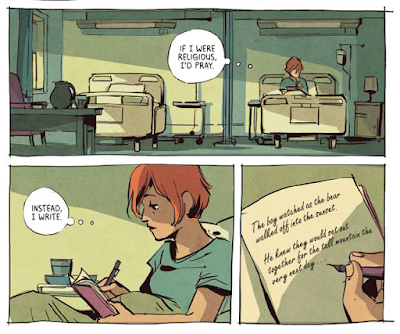
Waves, by Ingrid Chabbert & Carole Maurel — published by BOOM! Studios
I’m going to be completely honest — I sobbed through this book. The protagonist is pregnant, and the reader is made to believe this is not her first pregnancy, but that her other attempts thus far have failed. She and her wife are deeply invested in having a child, but because the protagonist’s condition is so tenuous, she is made to stay in the hospital. Unfortunately, things take a turn for the worst and the couple loses their precious son — stillborn. God, I’m starting to tear up just typing this! But the story is not just about losing the baby. It is about how that loss is used to help the protagonist push forward and find hope in a new career of writing books for children. This is an autobiographical comic with gorgeous illustrations by Carole Maurel that utilize color to great success. It’s definitely not a light read, but it is short and extremely affecting. I thought it was brilliant, even if I had to read a lot of it through blurred vision.
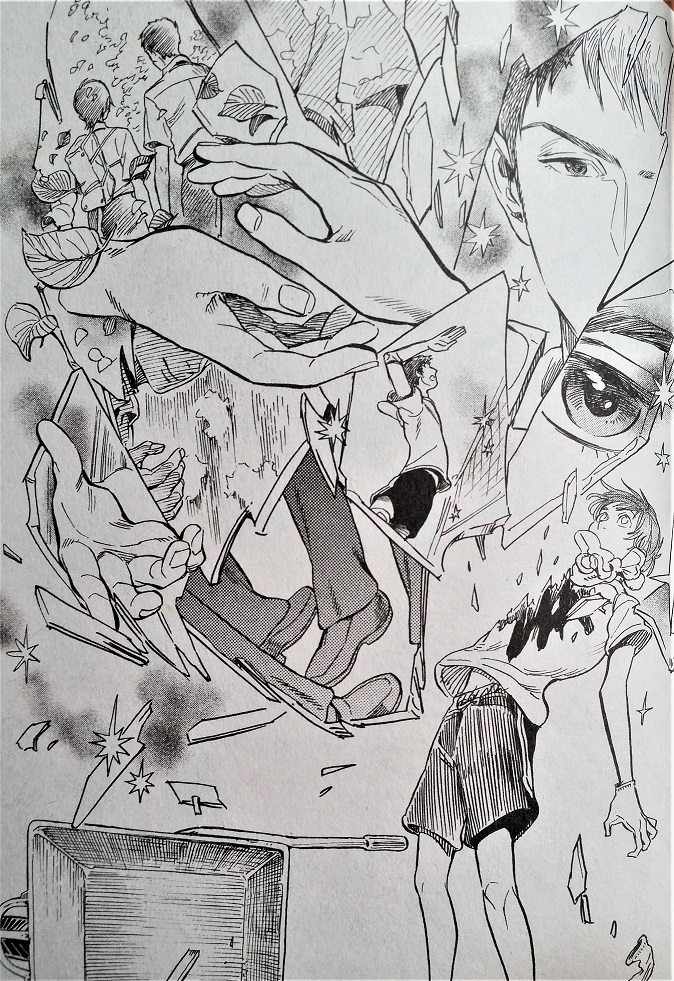
Our Dreams At Dusk, by Yuhki Kamatani — published by Seven Seas Entertainment
I have been SO excited for this release for so long, and I finally got my hands on a copy through the library. It is a little different from what I anticipated, but I’m not at all disappointed in it; rather, I think it’s great, and I can’t wait to check out the next volume which just recently came out. Protagonist Tasuku Kaname is struggling at school. Not with bad grades, but with being the new kid and being singled out for being gay. Of course, he didn’t tell anyone that he was gay, and he vehemently denies it, but the teasing comes anyway, to the point where Tasuku’s conflicting feelings nearly lead him to make a fatal decision. Luckily, he is distracted by a woman he sees in the distance who appears to be jumping to her death as well, and when he runs to see what became of her, he is confronted with her, whole and hale, and referred to by everyone in the drop-in center he found her in as “Someone-san.” Through this strange encounter, Tasuku meets others who are queer, and he is able to begin confronting his own fears about his sexuality and what it means for his life and his relationships. I find it deeply gratifying to have a fictional LGBTQ+ manga written by a non-binary creator and depicting a supportive queer network. A lot of the genuine queer works we’ve seen coming Stateside are autobiographical, and while their messages are so important, it is nice to see the field open up to fiction that isn’t relegated to BL or yuri — both of which are great in their own way, but which seldom reflect lived experiences or common concerns, especially amongst queer youth. Kamatani is know for their other manga series, Nabari no Ou, and I’m hoping that the name recognition might help get this manga into the hands of those who need it most — though my guess is that it’s already doing quite well based on the force of its subject matter alone. The importance of the story and characters aside, Kamatani’s artwork is gorgeous — fluid and expressive, with a boldness that I wasn’t expecting based on the dreamy cover designs.
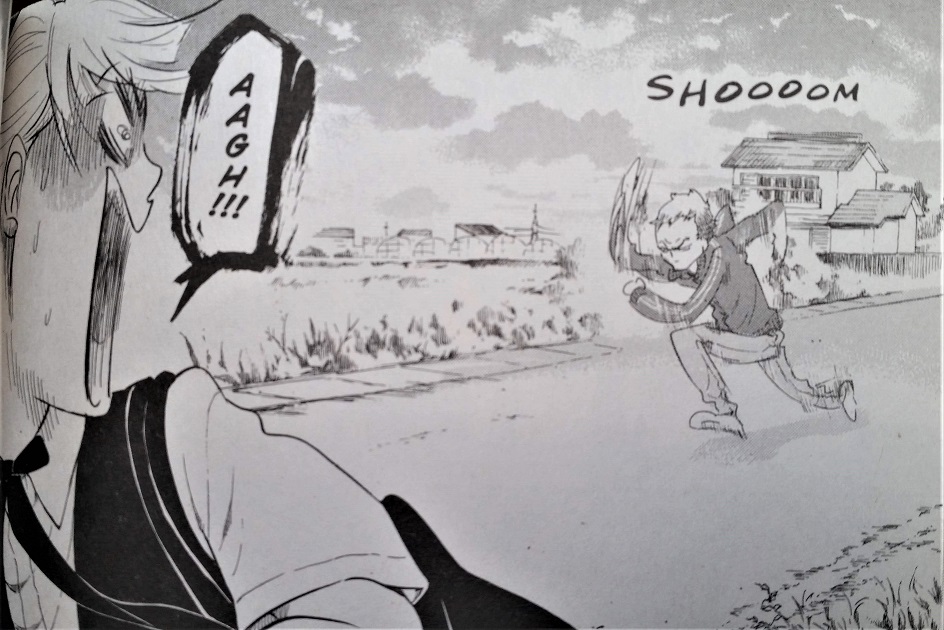
Blank Canvas, by Akiko Higashimura — published by Seven Seas Entertainment
This month I finished reading Tokyo Tarareba Girls and then immediately delved straight into Higashimura’s autobiographical work Blank Canvas, where she details her teenage experience of attending art classes outside of school to help boost her portfolio for college, and her relationship with an old, ornery art teacher who helped her improve immensely. I love Higashimura’s no-holds-barred, unflattering depiction of herself at that age: cocky, under-motivated, and underneath everything, deeply uncertain. This helps to shed new light on Higashimura’s many successes as a mangaka, reminding readers that while there might be something about her that is innately talented, it took years and years of work and drilling to become the master she is today. I could have used this manga as a self-assured teen, if only to light a fire under my butt to work harder at my dreams and to seek out the guidance I didn’t really think I needed. I’m still a little too cocksure sometimes, so it’s amazing to see someone I respect as much as Higashimura humble herself for her audience in this way. I’m not sure I’d have the same confidence if I were her, but she has absolutely, 100% earned it. And besides, she seems like the kind of teen it would have been fun to be friends with.

Classmates, by Asumiko Nakamura — published by Seven Seas Entertainment
There was a time, not too long ago, where I was very skeptical of Seven Seas’s output. They published a lot of works that were not for me in the extreme, with plenty of fanservice and an uncomfortable blurry line between what constituted age-appropriate content and what did not. And yet here I am today, promoting three of their recent manga with nothing but my highest accolades. At some point around the time they published My Lesbian Experience With Loneliness, Seven Seas took a deep dive into queer stories and have really set the standard for what types of manga readers are really scrambling for. Among those is one of my all-time favorite manga, Classmates. DMP had already owned this license, for digital distribution only, so I had read it a couple years back. I was struck then by a few things: the genuine sweetness of the story itself, and Asumiko Nakamura’s bizarre, stretchy, almost uncomfortable art style (which I adore). In my twenty-ish years of manga reading, I’ve read a lot of BL. A vast majority of it has been purely horny trash, stuff I didn’t particularly even like but felt compelled to read just to see if I could find the hidden gems. And the hidden gems are there, but you have to wade through scores of tropes: near-rape or rape scenes, coercion, incest, abuse, student-teacher relationships…basically, the tawdry, the inappropriate, and the obscene. But sometimes a manga like Classmates comes along — a sweet story about two teenage boys who fall in love and stumble through a predictable teenage relationship without too much meddling from the outside. And it’s a happy manga, one that brightens your day with its effortless charm and its delightfully wacky artwork. Nakamura’s long-limbed, long-lashed, almost alien-looking characters seem suited to eroguro works or philosophical stories — and she’s done things like that, too (I’m thinking specifically of Utsubora) — but somehow her distinct flair makes the characters’ expressions of amorousness, embarrassment, and teenage hilarity all the more effective. I’m so glad that this series has gotten the print treatment, and I hope that it draws in many, many new readers!
Phew! A really long one this month to make up for June’s scarcity. It’s nice to be back on a roll with reading — let’s hope I can keep it up for a while. Until next month, I wish you all happy reading!
Tokyo Tarareba Girls Wins the Eisner!
Many readers will remember my Eisner-related post from last year, where I talked about my concern that the Eisners do not take into account the manga that audiences are actually reading. I still think this is a problem — and that by and large, all awards ceremonies are to some extent popularity contests that don’t necessarily take into account the actual value of a work.
That said, this year one of my all-time favorite series, Akiko Higashimura’s Tokyo Tarareba Girls, won the “Best U.S. Edition of International Material — Asia” Eisner, against the works of heavy-hitting male mangaka like Tsutomu Nihei and Inio Asano. To say that I’m ecstatic would be an understatement. For years, I have watched one prestige seinen title after another snag the award — and regardless of the fact that they are certainly all deserving of accolades, it became more and more disheartening to see works by women or about women’s lives falling to the wayside.
The main thing about this win for me is the fact that now more people will know what Tokyo Tarareba Girls is. Many people will pick it up out of curiosity. They will be exposed to a work they wouldn’t have bothered with otherwise, even if only to see what all the fuss is about. And some of them will love it. Sure, there will still be the handful of grumps who don’t understand how “chicklit” won the award, but I like to hope that the vast majority will be impressed by how good it is, and by how they wouldn’t have had any idea if it hadn’t won the Eisner.
I want Tokyo Tarareba Girls to be successful, but more than that, I want works by women and created with a female audience in mind to gain the prominence and prestige of works created for a male readership. I want works that reflect my life and the lives of my women peers to be taken seriously, to not be dismissed as lesser or frivolous.
I want to stop wondering “what if, what if,” and be able to rejoice because the future I have been hoping for — a future where the voices and interests of women, of queer folks, of people of color are acknowledged and uplifted in the comics world — has become a reality.
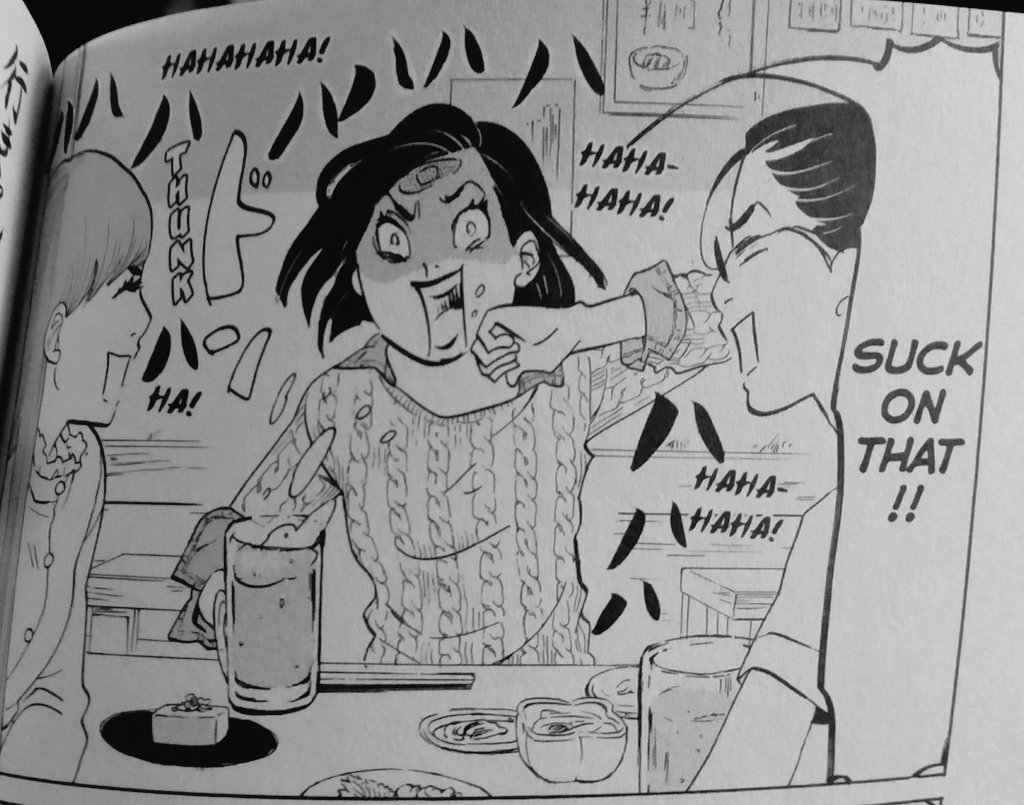
June Favorites
Okay, everyone. It’s time for a confession. I am absurdly behind on my reading this month. We moved at the end of May and have been slowly but steadily unpacking and putting the new apartment together. On top of that, I’m getting back into the swing of doing all my freelance work — much of which was put aside between TCAF and the move. So it’s been a bit of a topsy-turvy month, and I’ve resorted to crashing, exhausted, into bed and listening to audio books of YA fiction or episodes of podcasts instead of reading much in the way of comics.
That doesn’t mean I don’t have any comics-related news, however. One of the exciting new ventures that has opened up for me because of TCAF is that I will now be writing regular, biweekly manga reviews for The Comics Beat! I’m really excited to be publishing long-form reviews on a very visible comics website. My first review went up on June 17, and it was for Space Battleship Yamato, which probably would have been rounded up here if I hadn’t already written about 800 words about it there, haha.
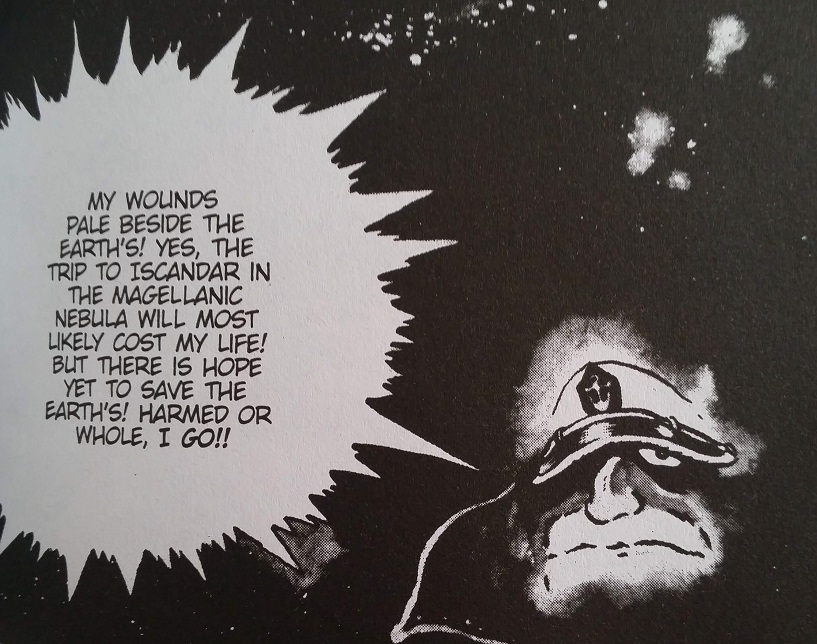
Fear not! Just because I’m reviewing for The Beat does not mean I won’t keep posting my shorter reviews and recommendations here, along with other more editorial pieces. I hope to get back into my normal reading habits soon. (I’m five books behind on my Goodreads reading challenge! I was 10 books ahead not that long ago!) For this month, I have just one comic I’d like to talk about.

Island Book, by Evan Dahm — published by Iron Circus Comics
My husband has been a fan of Evan Dahm’s work for a long time, having first read Rice Boy as it was being serialized online. Though I’ve always liked Dahm’s artwork, I hadn’t actually picked up any of his comics until now, for no reason other than I hadn’t gotten around to it. Island Book was a delight. I appreciated its calm, gentle story, and its characters who are all distinct in their worldviews but united in their desire to seek out something exciting — in this case, a sea monster who seems to be threatening all of their islands. It is not a straightforward story necessarily, but it conveys the mood of quiet, determined strength. The protagonist Sola has decided that since she is “cursed” (because the monster reached out to her when she was a very young child), she is going to find the source of her curse and figure out what, exactly, the monster is. Along the way, she finds friends who also want to see this monster — one with the intention to slay it, and the other to weave an epic tale of his adventure. They come back changed, though it is subtle in some instances. Throughout it all is the idea of challenging what you are raised to believe. For Sola, she has been taught that her island is alone in the ocean, but as soon as she ventures out she sees a much, much wider world than she ever could have imagined. I happened to read this story before bed, and its an excellent book for that purpose, ushering the reader into sea-soaked dreams of friendship and adventure. I’m looking forward to reading more of Dahm’s work soon. (We do have a copy of Rice Boy knocking around, after all. Now we just need to finish unpacking all the books….)
That’s going to do it for June. I have deadlines galore this week, and then it’s already July! I can’t believe how quickly this month has zipped by. Keep your eyes peeled for my reviews on The Beat, and I’ll be seeing you no later than next month for another round-up — hopefully a more robust one!
May Favorites
As I’m writing this, I’m gearing to move out of my apartment and into a new, slightly bigger one (the better to accommodate my ever-increasing manga collection, right?), and I’m surrounded by boxes and boxes of my stuff. There’s nothing that makes you want to consider a life of asceticism quite like moving. May has been very much a transitional month for me, in more ways than just a change of address.
I already wrote a little bit about my adventures at TCAF. That sojourn sparked a lot of excitement and motivation within me, so hopefully I’ll be stepping up on my manga writing even more in the aftermath — gotta ride that wave of inspiration for as long as possible!
And something I haven’t mentioned yet is that I have contributed a short piece on manga basics to the upcoming CBLDF Presents Selling Comics: The Guide to Retailing and Best Practices in the Greatest Modern Art Form. I am so, so excited to have been asked to do this; about six years ago, CBLDF and Dark Horse collaborated on a similar book all about manga that featured writing from many intelligent, excellent writers whom I greatly admire. And since I have a lot of strong feelings about comics retail and selling manga in particular, this felt like an excellent first foray into comics print publication for me.
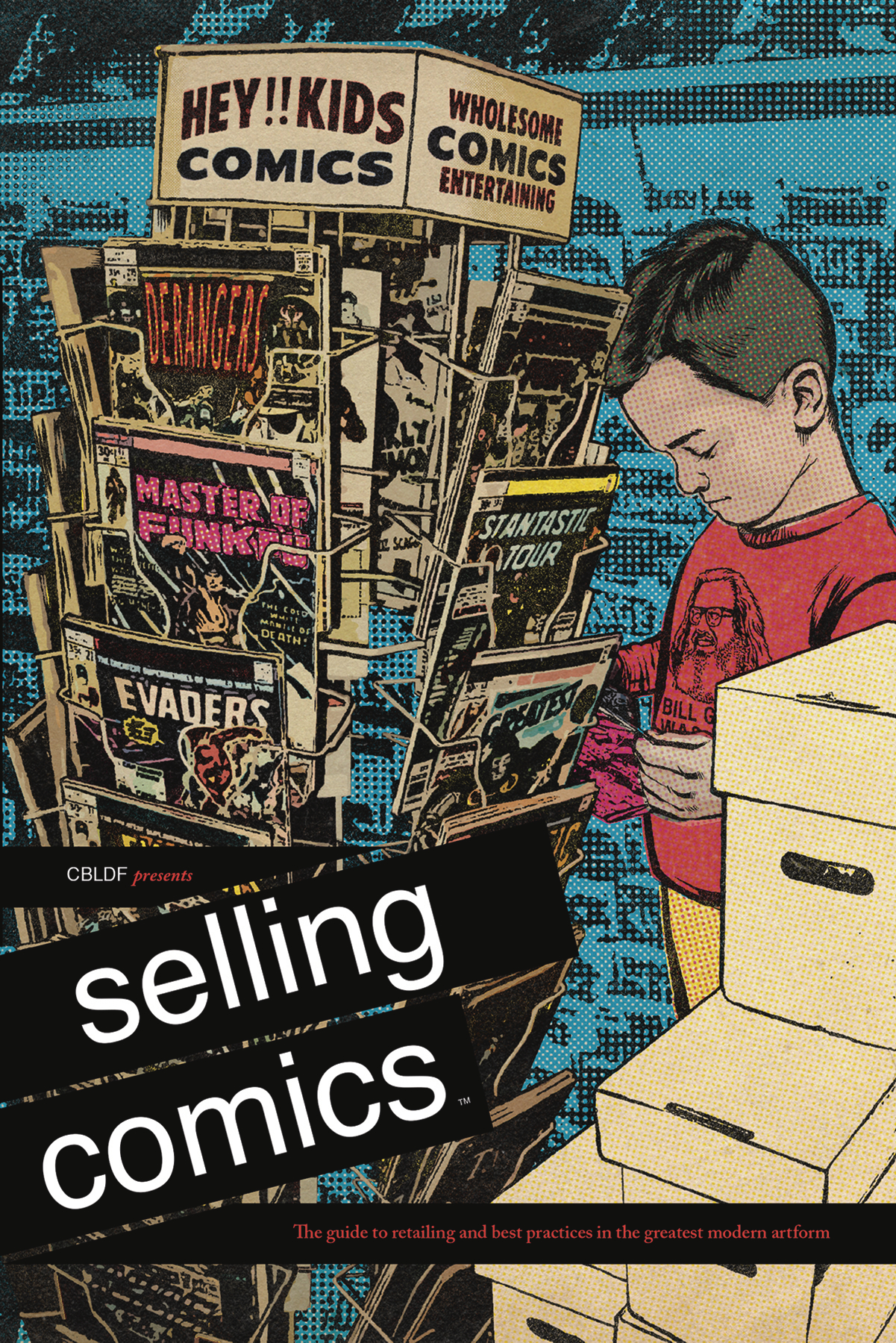
In between all the travel and writing, I did get a chance to read some really excellent books of all stripes. As usual, it’s time for me to highlight my favorite comics for the month!
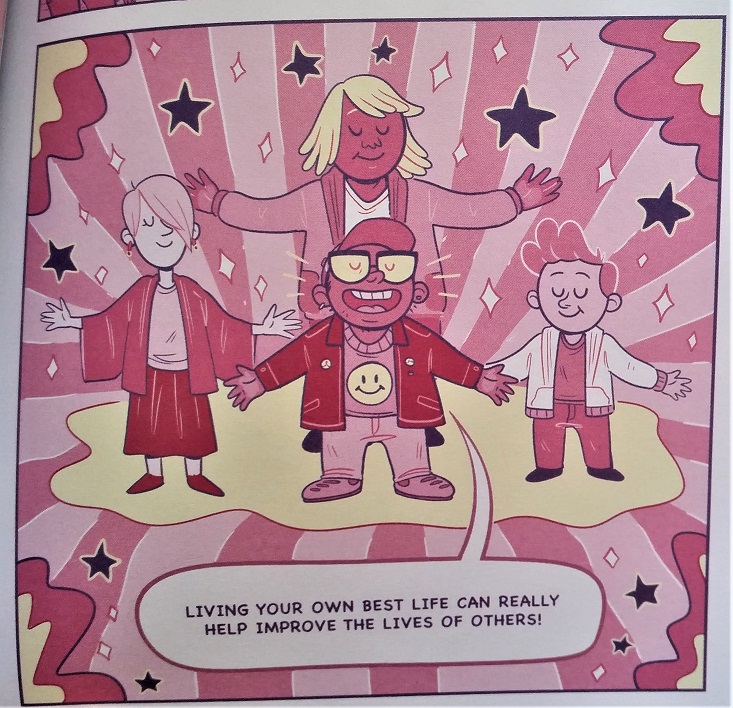
A Quick & Easy Guide to Queer & Trans Identities, by Mady G & J.R. Zuckerberg — published by Limerence Press
Last year, Oni Press’s Limerence imprint published A Quick & Easy Guide to They/Them Pronouns, which I thought was absolutely excellent, and I was gratified that we sold a ton of copies at Comicopia. With its friendly, non-judgmental tone and low price point, it was a really nice, gentle introduction to the topic of non-binary genders for people of all backgrounds. And so, I was very excited when Queer & Trans Identities was announced. It’s slightly less auto-biographical, but equally kind in its delivery with the added bonus of covering a lot of ground succinctly. There are two “stories” going on at the same time: A snail is teaching other snails all about different human identities and expressions, and a fantasy world populated by “sproutlings” shows the identity progression of one of its citizens. The artwork is adorable, bright, and fun, and the back matter encourages readers to create their own “sprout-sona” and design matching friendship jackets. I think what I enjoyed most about this guide was its dedication to inclusivity, and its patient guidance through myriad identities and sexualities — and a wonderful chapter on forging healthy, caring relationships that everyone, regardless of gender or sexuality, could use. I think this is a wonderful addendum to any coming-of-age talk that a parent or teacher might have with a young person, and it provides resources for further research as well. Growing up, I had to figure out my own ideas of gender and sexuality without the guidance of any adult queer person, and even though I have no real regrets or concerns about my own path, I think this is an endlessly valuable guide that I and my peers could have really benefited from.
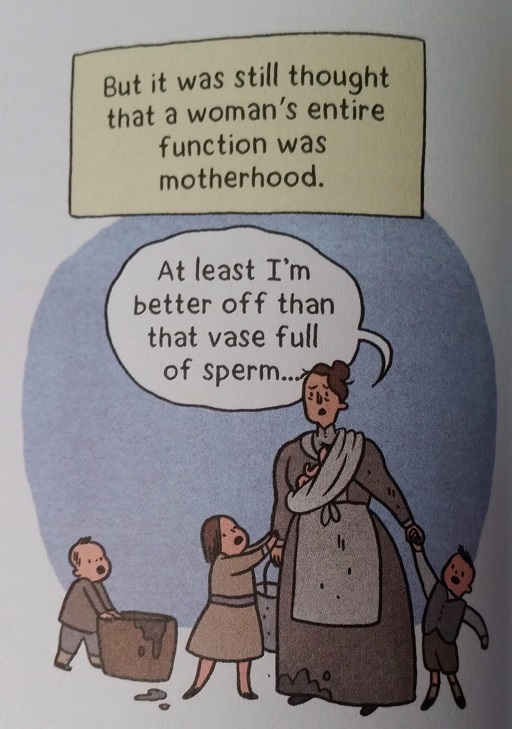
Kid Gloves: Nine Months of Careful Chaos, by Lucy Knisley — published by FirstSecond
It is a really, really scary time to be a person with a uterus in the United States right now. Abortion rights are being overturned state by state, causing people like me — even those of us who want to get pregnant and have children! — to worry about our autonomy and our value in the eyes of the law. So it was a really interesting time to decide to read Lucy Knisley’s autobiographical account of her very high-risk pregnancy — a book I had been patiently waiting to read since it came out, but scores of people already had on hold at my local library. This was actually the first of Knisley’s books I’ve ever read, though I do follow her avidly on Instagram, and it was worth the wait.
From the time most girls are born, there is an emphasis on them becoming mothers, whether intentionally or by accident. There is a lot of burden placed on girls and women to have babies and also to prevent them, lest they be marked “fast” or “easy.” But what I think doesn’t get talked about quite enough is how complicated and often dangerous pregnancy is — or how little control a pregnant person has over what happens to their body and their baby, in the grand scheme of things. So I appreciated Knisley’s openness about her two miscarriages, her extraordinary battle with constant morning sickness, and her concerns about pre-eclampsia that went unaddressed by her doctor. All these deeply personal and evocative anecdotes are peppered with chapters on the history of pregnancy and gynecological medicine, which is a personal interest of mine anyway (I love the Sawbones podcast!). And though she struggled so fiercely through her pregnancy, it is so clear how much she loves her son, how grateful she is for his presence in her life. This is an excellent read for our times, a good reminder that pregnancy and motherhood should never be forced upon a person, that it is a great risk and a great responsibility.
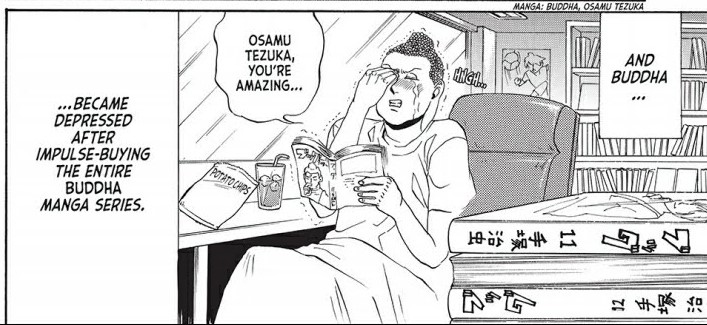
Saint Young Men, Volume 1, by Hikaru Nakamura — published by Kodansha (digital only)
I feel as though I’ve been waiting for this manga all my life. It’s commonly known that mangaka Hikaru Nakamura has been hesitant for Saint Young Men to have an English-language release, for fear that it might stir up some religious controversy. But as a proudly lapsed Catholic, I am ecstatic that it has finally made it Stateside. I am a huge fan of religious comedies; my favorite novel is Terry Pratchett and Neil Gaiman’s Good Omens, and Dogma is pretty high up on my list of favorite films. So the premise of Jesus Christ and Siddhartha Gautama kicking it in a tiny apartment in Japan just for fun is exactly in my wheelhouse. I appreciate anything that humanizes the figures that people worship, that allows common people to identify with these holy beings. I think that at the root of spirituality is the understanding that at our most basic, we are all connected to one another. And somehow, I think that comedy often conveys this idea better than any fire and brimstone sermon, catching us with our hearts and minds more open than they would be when we’re expecting to be lectured. Nakamura has a knack for finding the little things that elicit the big laughs — like how Jesus is so enamored of the fact that teenage girls think he looks like Johnny Depp, or how Buddha loves Osamu Tezuka (and especially Tezuka’s biography of Buddha himself). She’s also extremely adept at illustrating extreme expressions and inserting funny little tidbits, like the text on the T-shirts that Buddha screen-prints for the two of them. I really hope that this volume sees a lot of success so that maybe a print version will follow along soon!
It looks like I covered some heavy territory this month — gender identity, pregnancy and parenthood, and religion. But I was left with feelings of immense peace and gratitude after reading all these books, and I was able to reflect on my own ideas and beliefs without feeling judged or confused. It’s a rare thing, in our world today, to come away from hot-button issues feeling refreshed rather than completely exhausted and demoralized — and trust me, I’ve spent plenty of time there lately, as well. I always appreciate when reading can both be informative and act as a refuge, as a tool of empowerment to be wielded in my day-to-day life. We are very lucky to see these kinds of works being published, and I can’t wait to see what else we can look forward to in the future.
TCAF Recap!
This past week has been an absolute whirlwind. Last Wednesday, I got on a plane to Toronto to start my volunteering adventure with the Toronto Comics Art Festival. I always love seeing the behind the scenes stuff at events, love learning how each team organizes their time and resources differently. And absolutely everyone on the TCAF team is absolutely lovely — so very kind and accepting and helpful.
I decided to volunteer for TCAF after leaving Comicopia, out of a desire to remain close to the comics community in a more tangible, physical way than just sitting at my desk at home and writing about manga. (I’ve also volunteered to help organize the Massachusetts Independent Comics Expo this year, for the same reason.) And for me, that’s really what comics is all about: a sense of community.
There were so many incredible events going on and comics work to see, but by and large the best thing about this show was the people I met and interacted with. Some of those were people I had met before and got to know better, and some of those were people whom I have been following and admiring for years and whom I was lucky to finally meet in person. And through it all, everyone was so kind and so supportive. I received so many words of encouragement and definitive, actionable advice from people with more experience and a better understanding of what the industry needs from an authoritative voice in manga.

And honestly — I just had a lot of fun. I got to work all the Junji Ito events, which was a really exhausting experience in many ways because everyone was SO EAGER to meet and listen to him. But that also means that I got to listen to him, even got to chat with him briefly. Hearing stories about his journey as an artist and what motivates and inspires him has rekindled an interest in writing about him — so look out for that soon, hopefully! He’s one of my absolute favorite mangaka of all time, and up until now I felt that he didn’t necessarily need my help getting any kind of recognition (whereas I strive to write about women a lot because I want to boost their readership). But sometimes…I just have to write things that are meaningful to me, and I would get a lot of satisfaction out of exploring the reasons I find his work so evocative and resonant in my life.
Because I was working events, I didn’t get a ton of time to peruse the show floor, but all the work I saw was truly incredible. Artists from all over were arranged on three full floors in the Toronto Reference Library selling their comics, bonding with readers, working on commissions. Attendance was enormous, and I heard from a lot of artists that they were amazed at how much they sold. This support for the arts, and for independent artists, is so admirable. It was so gratifying to be in such a positive, upbeat space. Even though I was working hard and not sleeping as much or as well as normal, the general good mood was palpable and infectious.
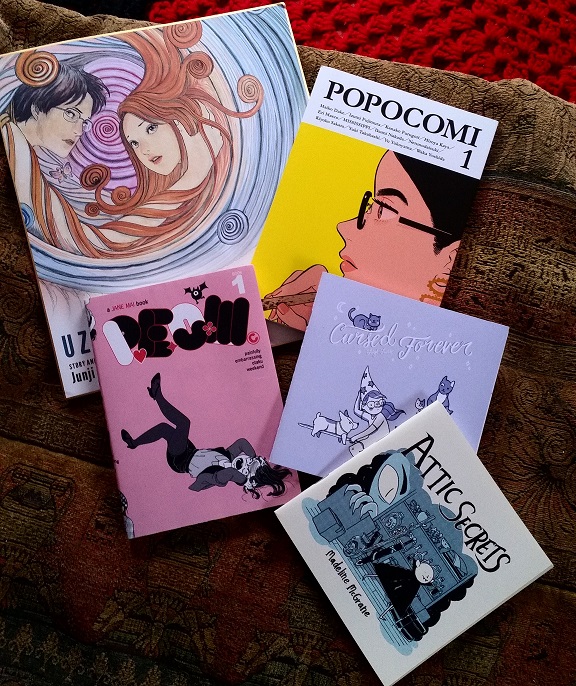
I was relieved to come home to my own bed, but also very satisfied in my decision to go to TCAF for the first time as a volunteer. It was a truly remarkable experience, and I hope that I can go back again next year — as a volunteer or otherwise — and experience the jubilant atmosphere and incredible conversations once again. I know that I’ve started relationships this past week that will last for many, many years to come. I’ve come away from this festival feeling rejuvenated, motivated, inspired, and so very, very grateful.
April Favorites
Every month, I get the itch to write this segment about halfway through, thus defeating the point of having a monthly round-up! I get too excited to talk about what I’ve just read, and I read a lot of good stuff in April.
Actually, a lot of stuff in general happened in April. I turned 29 on the 4th, so here’s to the last year of my 20s! My husband and I are in the midst of apartment hunting, which is always chaotic, especially here in the Boston area. And Anime Boston was last weekend! Even though I don’t technically work at Comicopia anymore, I helped with the ordering and was there on the floor from set up on Thursday to break down on Sunday. It was a really great show, and I’m glad I was able to be a part of it. Selling at conventions is my favorite kind of retail, because everyone is just so excited to be there and see what you’ve got and talk to you about it. And all the con-goers are so creative — I saw so many excellent costumes! Oh, and my very first post for Anime Feminist went up this week, as well: a spotlight on amazing artist and mangaka Junko Mizuno.
As May approaches, I’m getting ready to head over to the Toronto Comic Arts Festival (TCAF) for the first time, and I’m super excited. Between that and moving, May is going to be intense — but we’re not there yet. For now, I want to reflect on all the good stuff I read in April! And it’s actually all relatively new stuff this month, a sure change for me.
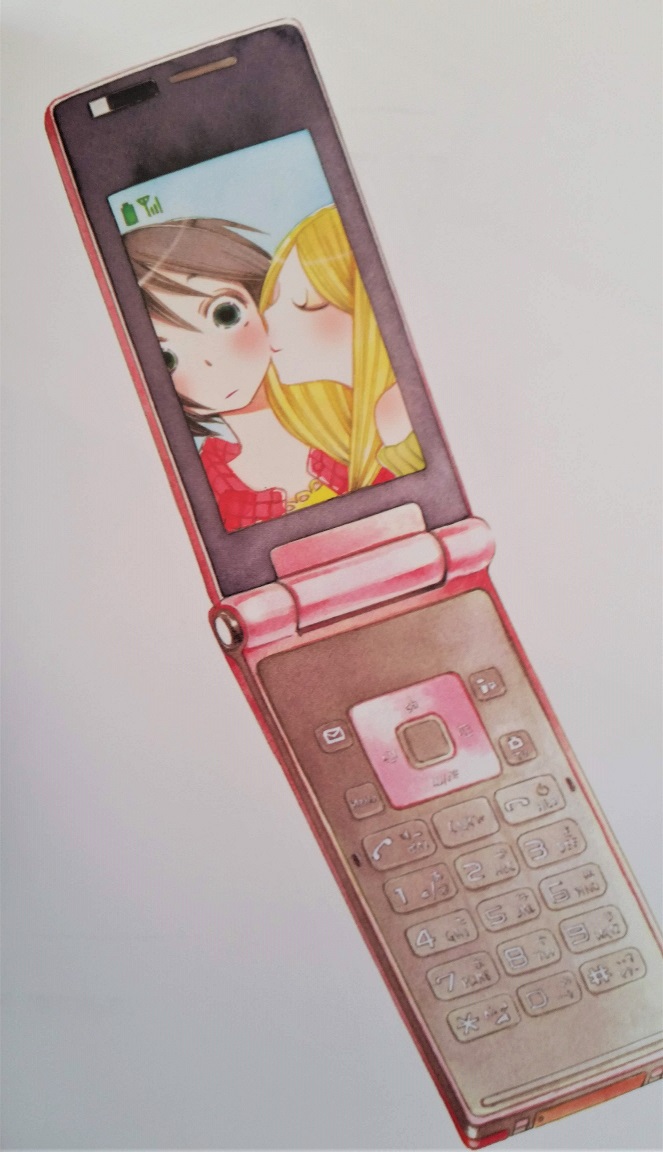
Maiden Railways, by Asumiko Nakamura — published by Denpa
This is the first of Denpa’s offerings that I’ve gotten a chance to read, and it’s the one I was most looking forward to. I love Asumiko Nakamura. Her art is so strange, both adorable and almost uncomfortable with all its sharp angles and long limbs. This volume is an anthology of railway-themed romances. It is simple and straightforward in many ways, but as with all of Nakamura’s work, it sets a very distinct tone, in this case of hope and longing and compassion. It’s a really lovely little collection with some lesbian themes neatly tucked into it with no fuss. Between this and Seven Seas’s upcoming print version of Classmates coming out soon, I am thrilled that more readers have access to Nakamura’s work.

Bloom, by Kevin Panetta and Savanna Ganucheau — published by FirstSecond
I had to wait for this book from the library for months, and I absolutely understand why — it’s absurdly charming. Ari’s dream is to move to the city with his band, but he can’t seem to escape his responsibilities at his family’s bakery. Hector, a culinary school student, has come to town to pack up his deceased grandmother’s home. Ari hires Hector to help in the bakery, in the hopes that by replacing himself, he will leave his parents no room to argue about his leaving home. But over the course of the summer, Ari and Hector grow close, and they have to make some big decisions about where their lives are headed, and whether those lives include each other. This book was so unbearably sweet, and so beautifully illustrated. Savanna Ganucheau does an excellent job of showing everyday examples of sexiness — nothing exploitative, but the little kinds of things that a person appreciates in their partner, like how they look when they’re focused, or how they move when they’re excited. With a cast diverse in both ethnic background and body type, and a strong, happy queer narrative, this is an incredibly delightful read for teens and up.
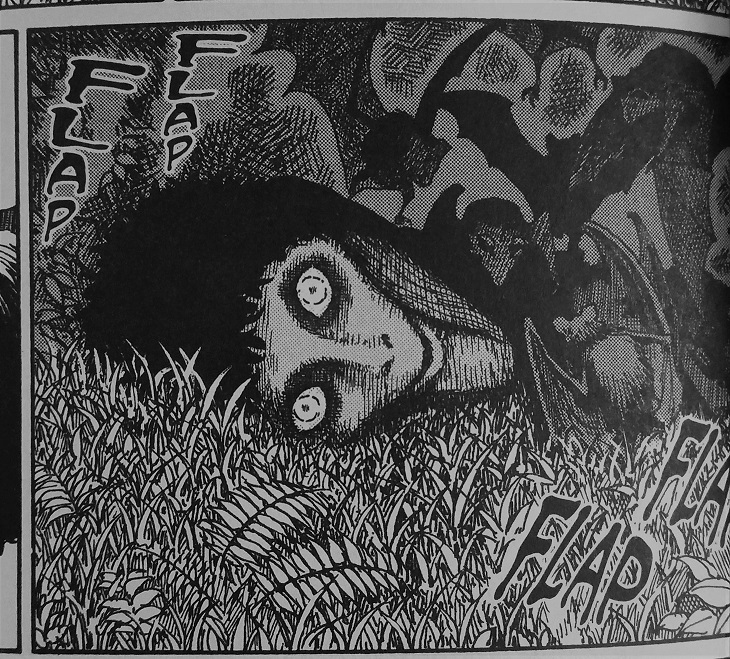
Smashed, by Junji Ito — published by VIZ Media
It’s no secret that I’m a HUGE Junji Ito fan. (That’s part of the reason I’m so excited about TCAF!) I never know what to expect with each new anthology: Will I be scared? Will I laugh? Will I feel like I just watched a particularly poignant episode of The Twilight Zone? For me, this collection had a lot of humor in it, and that is perhaps one of my favorite things about Ito’s work. There is a very fine line between comedy and horror, and no one loves to hop back and forth across that line as much as Ito. I think my favorites in this collection were “Bloodsucking Darkness” (because I love bats), “Soichi’s Beloved Pet” (because I love cats), and “Library Vision” (because I love books). The linked Soichi stories never fail to be silly fun, and as usual Ito’s artwork throughout the whole anthology is gorgeous and detailed. Truly, he is a master of horror, and all other kinds of base human emotions.
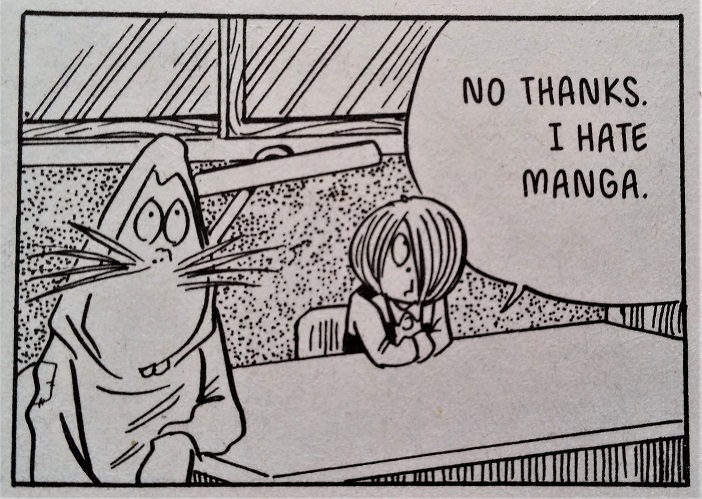
Kitaro’s Yokai Battles, by Shigeru Mizuki — published by Drawn & Quarterly
It’s been so long since there was another installment of Kitaro, and I was thrilled when I was alerted to this making its way into my pull at Comicopia. Who on this earth doesn’t love adorable, weird, childish monsters with potty humor? Only boring people, that’s who! In this collection, I was particularly fond of the “Oboro Guruma” chapter, in which Shigeru Mizuki has inserted himself as a major character, plagued by yokai who are taking over his home as their base of operations. As usual, Mizuki’s cartoony characters sit atop his lush and gorgeous backgrounds seamlessly, and the oft-times odd solutions to yokai-related problems harken back to simpler times and simpler story-telling mechanics. With each volume comes another installment of translator Zack Davisson’s “History of Kitaro,” which really appeals to my interest in both general world history and manga history specifically. A fun read suitable for just about anyone who appreciates a little dark whimsy in their life.
That’s going to do it for this month! I made the conscious decision not to include the sixth volume of Tokyo Tarareba Girls this time around, even though it’s one of my absolute favorite series, because I’ve already written about it in the past, and I anticipate I will talk at great length about it in many forms in the future. I thought I’d spare you all, haha.
I already have a huge pile of comics waiting to be read (don’t I always?), so hopefully I’ll have a nice round-up for May, as well. Happy reading!
March Favorites
It’s finally starting to feel like spring, and I couldn’t be more grateful. It’s so much easier to motivate myself to work when the sun is shining, especially after months and months of frigid winds and gray skies. March is always an odd month, sitting right at the edge of winter and spring, and it often makes me feel unsettled.
After over a month since my sweet kitty Mia’s passing, my husband and I decided we would start the process of looking for new feline companions, specifically hoping to adopt a bonded pair. We absolutely did not expect to adopt on the day we went to the local MSPCA shelter, but of course…the cats had other plans. On March 17th (Saint Gertrude’s Day, the patron saint of cats!), we brought home Zelda and Hilda, a mother-daughter pair of little black cats. They are charming in the extreme, so expect me to gush about them even more as time passes.
On the other end of the spectrum, I’m going to be having my wisdom teeth removed this coming Friday. It’s long overdue, and I’ll be glad once it’s done, but I’m definitely dreading what I’ve heard is a rather painful healing process. But who knows, maybe it’ll afford me more time to read….
Which brings me to the point of this post! Last month I did a round up of my favorite comics reads, and I’m going to go for it again. If I do it twice, it’s a monthly column, right? I actually didn’t read a ton of comics this month, instead favoring some truly indulgent murder mystery audiobooks. But of what I did read, there are a few certain gems that I want to share.
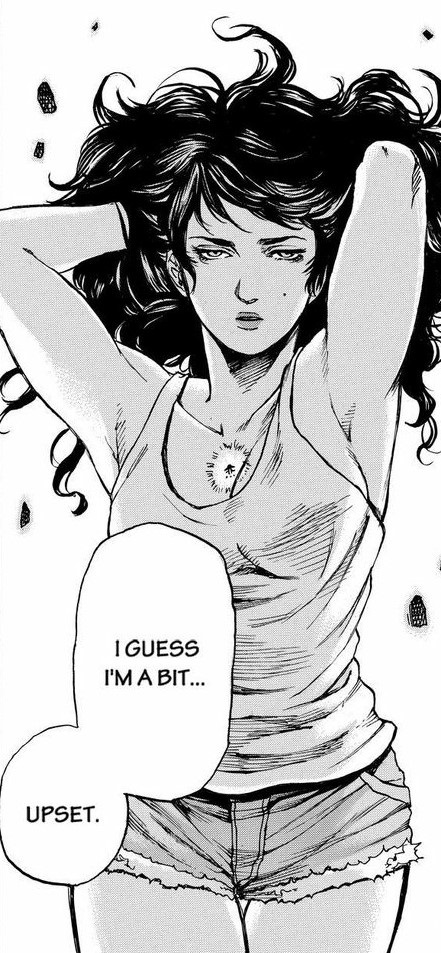
Star Light Woman, by Rie Kanou — available through Crunchyroll
At the start of the month, I decided to sift through the various reading-oriented apps on my tablet to find something new, and I came upon Star Light Woman on Crunchyroll. I was drawn by the image of protagonist Hoshi, rendered in what I think of as an 80s manga style, all puffy hair and cut-off shorts. I’m not sure what I was expecting — maybe a silly, slightly sexy sci-fi romp? And that’s more or less what it is, but somehow I really, really loved it. Hoshi just wants to lead a normal life, but she is the product of an experiment by an alien race to create the perfect weapon to save them from their enemies. She continually has to thwart these aliens while encountering other humans who have undergone similar transformations at their hands. It’s a short little series without much depth, but it’s truly funny and the artwork is stunning. I’m usually very critical of “sexy lady protagonist whose clothes don’t fit properly,” but Hoshi even gets my blood pumping, and I think that her strong, solid frame coupled with her highly moral principles lends a lot to her appeal. She’s like an embodiment of righteous female anger — a subject I’m always eager to see in my fiction!

Memoirs of Amorous Gentlemen, by Moyoco Anno — available through Crunchyroll
I love Moyoco Anno’s work, though I have to admit that this was only the second thing of hers I had ever read. Sakuran was a gorgeous and deeply provocative manga, so when I was scrolling through options on Crunchyroll’s manga app after finishing Star Light Woman, I remembered that I had been meaning to read Memoirs of Amorous Gentlemen for quite some time. I was not at all disappointed, and in fact I read Buffalo 5 Gals immediately afterward, just to get more of Anno’s sassy sex working heroines. But Amorous Gentlemen is special, probably my favorite of Anno’s works thus far. She is incredibly sensitive with sex work while also not over-glamorizing it; Colette and all her co-workers go about their day-to-day business like at any other job, and in many cases care very deeply about their clients. But they also are in close quarters, so they fight and disagree, and sometimes they are all too aware of how they are doomed to this life. The sex scenes are sometimes clinical and sometimes genuinely sexy, and I think that knowing when to evoke which mood in a reader is an incredible skill on Anno’s part. I’m also always going to be a sucker for her very stylized artwork, all angles and frills and fashion.
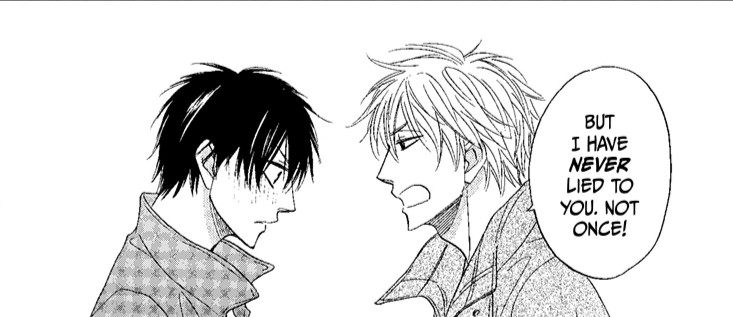
Candy Color Paradox, Volume 1, by Isaku Natsume — published by VIZ Media
The only manga on this month’s list that’s actually new this month, and the only one that has male protagonists! I was able to snag a galley copy of this right before it came out, and I honestly didn’t think it would be anything special. I’ll usually try to read new BL when it comes out, but I’ve been burned so many times with cliched plots or harmful tropes that it’s more a desire to keep up-to-date than an expectation that I’ll find something great. But VIZ’s SuBLime imprint has been knocking it out of the park lately, and I really liked this first volume. Protagonist Satoshi Onoe is a reporter who is proud of his body of work, but one day he is thrown onto a stakeout team with Motoharu Kaburagi, a photographer with a bad attitude whom Onoe believes stole his girlfriend away. The two start off on rough terms, but soon find that they work well together — and they begin to “catch feelings.” You know, that old gem. Honestly, it was cute and fluffy, and I feel like it’s been a long time since I read some straightforward “loathe to like to love” BL manga. The artwork is clean and appealing, with good sense of movement.

Nana, by Ai Yazawa — published by VIZ Media
This month, I decided to embark on a reread of Nana, and I’ve gotten up through volume 7 so far. I honestly don’t remember how much if it I’ve read in the past, so I wanted to make sure I got the full experience. I had watched the anime with my husband many years ago, and it wrecked us both, so coming back to it now, as a woman approaching my thirties instead of a woman barely out of her early 20s, is kind of a weird sensation. I’m farther away from any chance of making rash young adult decisions, but also in a place where I can envy the energy and passion that the characters portray as they lead a dramatic, punk-poverty-chic lifestyle. The series is old now, at least in the timeline of manga, so I don’t feel the need to summarize it, though I may one day write a whole piece about its meaningfulness to me, personally. I remember it didn’t sell great at Comicopia, but it was one of those series that I was adamant about keeping around. Yazawa’s artwork is so strange, with leggy, large-eyed Blythe-doll-esque characters and gorgeous renderings of haute couture of the 2000s, and I’m always enthralled by it. And I genuinely wish there was more work like Nana, work that explored the fraught relationships between female friends who love each other so passionately but don’t have the outlet to express it — an experience that will surely be familiar to many who squashed down their feelings throughout their teenage years for fear of judgment, or just because they didn’t have the tools to recognize those feelings. Society fucks women over, and Yazawa does an incredible job of balancing that message with a lot of genuine sensitivity for two very different women who are desperately reaching for an unobtainable happiness.
So, fluffy BL aside, it seems like I’ve read a bunch of manga about women who are dealing with too many external pressures getting in the way of their desires. That sounds like an appropriate way to have spent Women’s History Month! Honestly, though, my favorite works are often those by women representing the trials of womanhood — not because womanhood is terrible! But because it is cathartic to see your own worries magnified and projected in media sometimes, to see those fears getting played out somewhere safe, allowing you to recognize their validity but also release them in order to achieve your own goals, always knowing that you’re not alone.

The Beautiful & the Damned; Where Violence Meets Aesthetics in Pet Shop of Horrors
Among the extensive list of things I shamelessly love are: the occult detective genre, beautiful men, the monster-of-the-week format, and morality plays. Matsuri Akino’s Pet Shop of Horrors very neatly contains all of these things, and indeed might be the reason I’m so fond of some of them.
For those unfamiliar with this late-90s shojo series, the premise is that in LA’s Chinatown there is a mysterious pet shop whose proprietor, Count D, sells exotic “animals” to anyone who can pay the price. Each animal comes with a specific set of rules, and when those rules aren’t followed to the letter, tragedy inevitably occurs. LAPD officer Leon Orcot is assigned to investigate D and the weird phenomena linked to his shop, but in the process he is drawn into a series of Twilight Zone-esque situations that he cannot explain, let alone report to his superiors.
Right now, I can look at this premise and think to myself, “Yep, this is totally my kind of bullshit.” But when I first picked it up as a young teen, it was because I was drawn to its beautiful cover, where the androgynous D is holding a mermaid, whose back is turned to the viewer. D’s eyes are piercing and almost sad, his fingers long and delicate. I was in love with this man who moved in multiple worlds: the masculine and the feminine, reality and fantasy, beauty and horror.
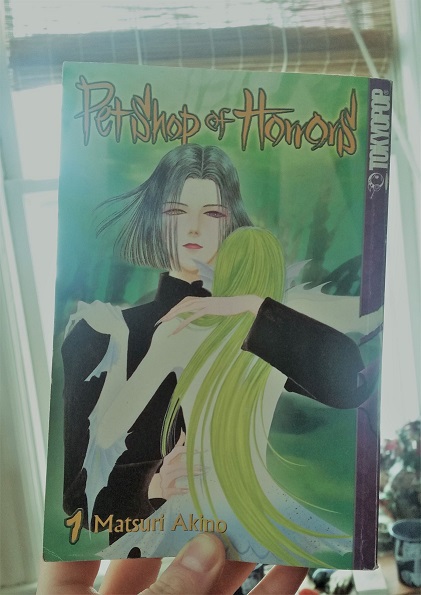
And when I bought and read this first volume, I was shocked. It wasn’t outright scary, necessarily, but it certainly was gory. In the first chapter already was there a horrific scene of evisceration, in and amongst all the trappings of a classic 90s shojo style, preoccupied with luxury and beauty. It was jarring, and it was effective. I discovered then that I didn’t dislike horror like I had previously thought, I just wanted it to be beautiful.
To this day, I find myself critical of scary or violent media that doesn’t also have a keen sense of aesthetics. I don’t necessarily enjoy being frightened; I am a naturally anxious person with vivid and violent dreams who does not react well to heightened suspense in media. I do like dark themes, though, and in recent years I have made it a point to expose myself to films especially that I know I would like if I could just get over my own hang-ups. And by being discerning, I’ve been rewarded with some of the most gorgeous horror and gore I’ve ever seen.
I think beauty and romance are natural companions to horror. All these themes pivot on an axis of drama, of amplified emotions. They all invoke visceral reactions, not logical ones. All my life I’ve surrounded myself with artwork depicting scenes and themes of witchcraft, hauntings, murders, martyrs, and mortality. It seems natural to me that scary things can pull at the same emotions I feel when I recognize something as beautiful.
And all this because way back in 2003, Tokyopop decided to take a chance on something that wasn’t very common in the comics world at the time: horror for girls. There’s plenty of it to be found in the manga world, and now there is more acknowledgement of girls and women reading outside of the romance genre. But it was new for me then, and even now Pet Shop of Horrors remains one of my favorite series, because it presented to me something I hadn’t known I was seeking out. It understood my tastes uniquely; it was able to marry my desire with my rage and prove them to be not disparate but intertwined and equally valid.
In truth, it is a somewhat silly series. It is certainly more fun than profound, but that in and of itself is not a criticism. It is pure, indulgent entertainment, and for me it is certainly laced with a nostalgic love that I will never be able to shake. How many times have I reread and referenced that first volume, gazing awestruck at the lovingly rendered intestines spilling out of a beautiful man’s body? How many times have I giggled at the flirtatious relationship between D and Orcot? How many times have I wished that modern depictions of mermaids were even half as scary as the one Akino has created?
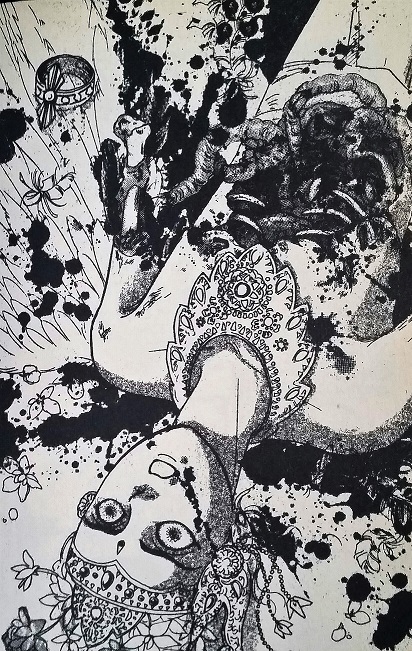
The series is unfortunately long out of print, and later volumes are hard to find. I imagine that it wasn’t a huge seller for Tokyopop, though I am forever grateful that they took a chance on it to begin with. The anime is available to stream on HiDive, brief as it is, if you’d like to get a glimpse into Count D’s enigmatic Chinatown pet shop.
February Favorites
Time for something new! I’m going to start trying to round up some of my favorite comic reads at the end of each month. These won’t necessarily be things that came out the month in question (though I do try to keep up when I can), but anything I’ve managed to get my hands on that I feel is worth a mention. I read a lot, so I’m going to have to figure out how to limit my choices, but hopefully with time will come clarity!
I will say, first off, that this has been an…interesting month. I still feel so new to the freelance writing world, but I do think that things are coming together nicely, and I’m getting to a point where I can start challenging myself with how much work I take on. I also lost my cat, Mia, on February 12th. She was quite old, and her decline was very rapid. While she was sick, I spent a good deal of my time attending to her; after her death, there was a lot of time where I was just too miserable to feel like I wanted to do much of anything, let alone read. Still, a visit to Comicopia did help lift my spirits considerably, and while I have to be a little bit more judicious in my purchases right now, I was able to bring home some good new material.
I am also about to spend five days with my family while James is away on business, which is why I’m getting this out before the true end of the month. I suspect I will be too busy doing things with my mom and trying to keep up with my writing work to read too many more comics. But I wanted to give this segment a try, anyway, so I’ve decided to work with what I’ve got.
So without further ado, my picks for the month!
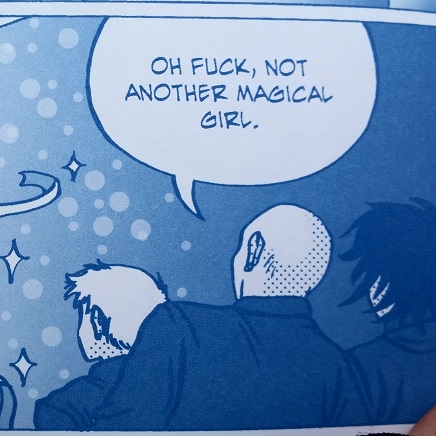
Magical Beatdown, Volume 1, by Jenn Woodall — published by Silver Sprocket
This slim little issue does one of my favorite things: It combines a love of the ultra-femme concept of the magical girl and mixes it generously with a hyper-violence that is both gross and cathartic at the same time. I think there’s a lot to be said about women enjoying and creating violent content, and some day I hope to talk about it more in-depth. But for now, I want to recommend the excellent pastel gore-fest revenge fantasy that is Magical Beatdown, because sometimes you just wanna go to the arcade without having to deal with losers! I’m looking forward to getting my hands on the second installment.

House of Penance, by Peter J. Tomasi, Ian Bertram, and Dave Stewart — published by Dark Horse Comics
Speaking of gore-fests, this standalone graphic novel is not for the faint of heart or stomach. The Winchester mansion in San Jose, California, is famous for it’s staircases that lead to nowhere, its doors that open onto nothing but air, and the nagging suspicion that it is not entirely empty. House of Penance is an exploration of Sarah Winchester’s mental state as she commissions the building of this strange domicile while grappling with the grief of losing her daughter and her husband, and the guilt of inheriting the wealth from a company whose business is murder. I’m always down for a strong anti-gun message, personally, and there is no holding back here as Sarah is confronted relentlessly by the victims of her in-laws’ firearm empire. Ian Bertram’s art is eerie and textured, Sarah especially portrayed with bug-like eyes that can see more than the men working around her. Dave Stewart’s incredible colors compliment Bertram’s lines beautifully, and his use of bright, vibrant blood red is very effective.
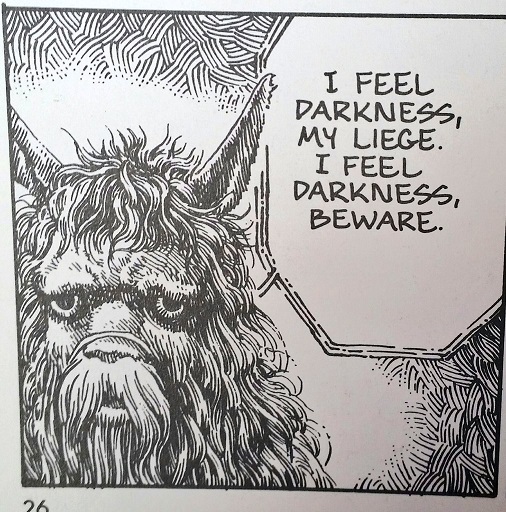
Shion: Blade of the Minstrel, by Yu Kinutani — published by VIZ Media (out of print)
I came upon this volume completely by accident, while I was still working at Comicopia. It was hidden away in storage, in a long box full of old single issue comics, many of which were single issue manga, from way back when everything was flipped and companies tried selling manga like Western single-issue comics. I was drawn to its striking cover and detailed artwork, so I brought it home. That had to have been nearly two years ago, as I had put it into a comic box and promptly forgotten it. I dug it out recently while I was doing some organizing, and I resolved to finally read it.
And honestly, I was stunned. This little volume is so extraordinarily different from any manga that is being licensed and published today. It wouldn’t be seen as marketable, probably, but I’m so glad that VIZ took a chance on it back in 1991, because it was a pleasure to read. The book is split into two stories that follow a mysterious minstrel who must first take his revenge on a monster who wronged him and his family, and then must take up a legendary sword to fulfill his destiny. That one sentence seems like straightforward fantasy, and in many ways that’s what Shion is; as an essay at the back of the volume explains, it is a classic hero arc seen in many fairy tales and epics. But it’s so gorgeously textured in its artwork, and for me it invoked the same feelings as Vampire Hunter D and classic Jim Henson works, especially The Dark Crystal. It’s creative and beautiful, and I’d love to see what Kinutani did after this work. Worth hunting down if you are able!

My Solo Exchange Diary, Volume 2, by Nagata Kabi — published by Seven Seas Entertainment
In many ways, there’s not much I can say that I haven’t said before, in various spaces, about Nagata Kabi’s autobiographical work. Of the three volumes she has out from Seven Seas right now, I think this one was my favorite, even though much of it was spent talking about her time in the hospital. I appreciate, more than ever, her honesty, especially as she realizes how her mental state had prevented her from understanding how much her family actually loves her and wants what’s best for her. She continues to struggle throughout the volume, but it is evident that she’s repairing her relationships and learning, slowly, how to better communicate her pain so that she’s not suffering alone. I know that many people have been critical of her constant self-destruction, but to that end I just have to say…it is evident those people have never struggled with serious mental illness, or really known anyone who has. What Kabi is going through is not logical, it is not easily navigated, and her honesty and willingness to expose herself like she this has surely had a positive effect on others who have felt similarly isolated, self-destructive, and hurt. I continue to send her only the kindest, gentlest, most positive thoughts as she works on overcoming her pain. It’s a hard road, and she’s been working at it for a long, long time. I hope she’s able to find some peace soon.
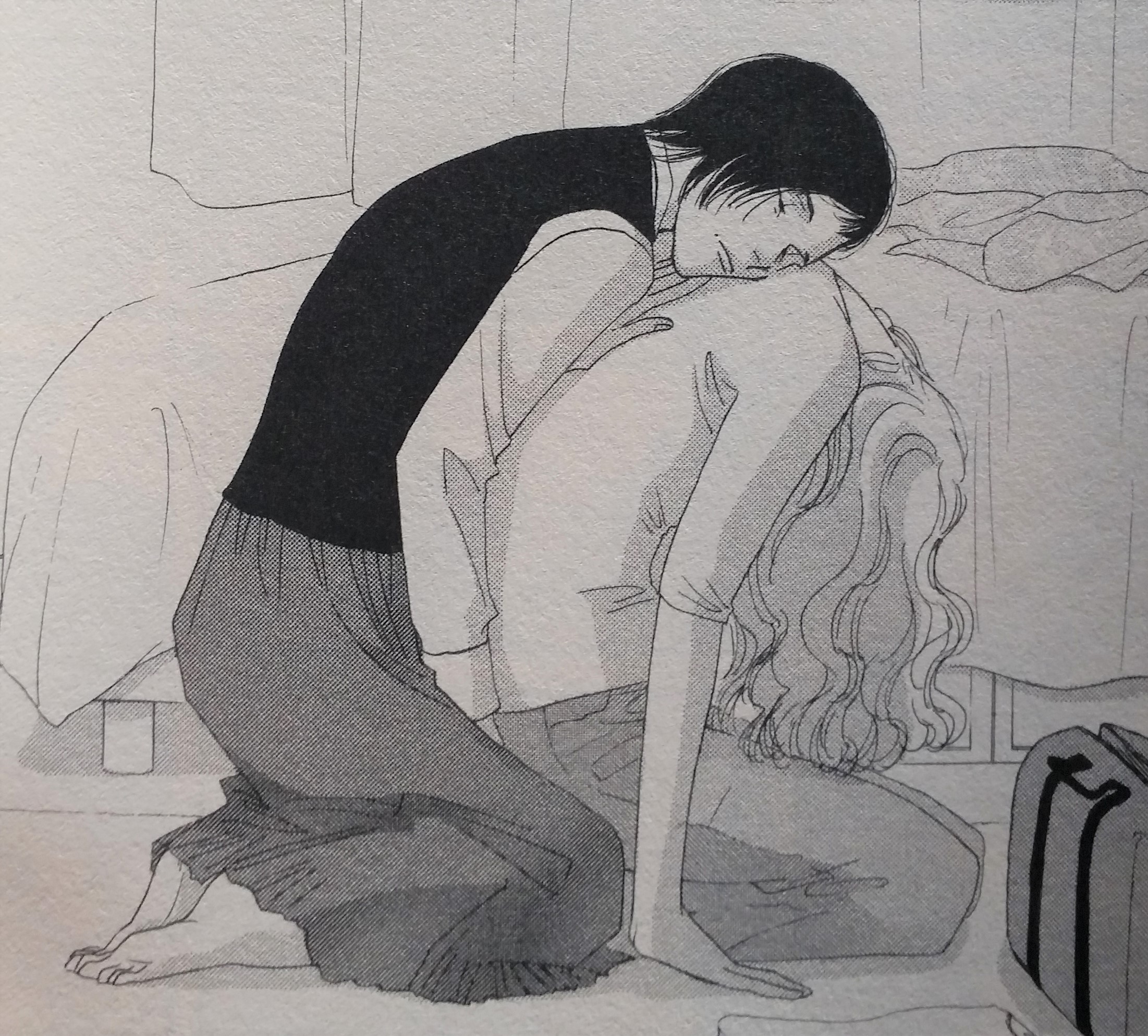
All My Darling Daughters, by Fumi Yoshinaga — published by VIZ Media
Fumi Yoshinaga is one of those creators whose work I always know I’ll enjoy, but who also manages to completely exceed my expectations every single time. So was the case with All My Darling Daughters, a standalone volume that explores various relationships between people in a friend group, with special emphasis on the one between Yukiko and her mother, Mari, who has married a much younger man. Yoshinaga has such a sensitive touch with her characters that I find myself sympathizing even with those who in a different author’s hands, I would absolutely hate. It is an incredible skill to express the nuances of humanity, and Yoshinaga is extraordinarily good at it. I felt especially drawn to the last story in the collection, which dives into Mari’s antagonistic relationship with her own mother (Yukiko’s grandmother). Mari hates her mother for having been unnecessarily cruel about her appearance while she was growing up, not realizing that her mother was trying, in her own imperfect way, to protect her daughter from becoming reliant on her good looks. I was so strongly reminded of the dynamics between the women in my own family, the dynamics between my mother and my grandmother, and the increased awareness I have lately of how heavy motherhood can be. “A mother is an imperfect woman,” Yukiko realizes, and it is a perfect underscore to a book full of imperfect people who are just trying to do the right thing.
Looking back, it seems I’ve read a lot of very different books this month, but there are certain themes that run throughout. A lot of introspection, explorations of mental health (both real and fictional), and a little bit of violence and some adventure to balance things out. I like the micro-review format because I can fit several recommendations into a post at once, and I am not liable to give too much away. I hope this proves useful, and I look forward to following up again next month with some more excellent reads!